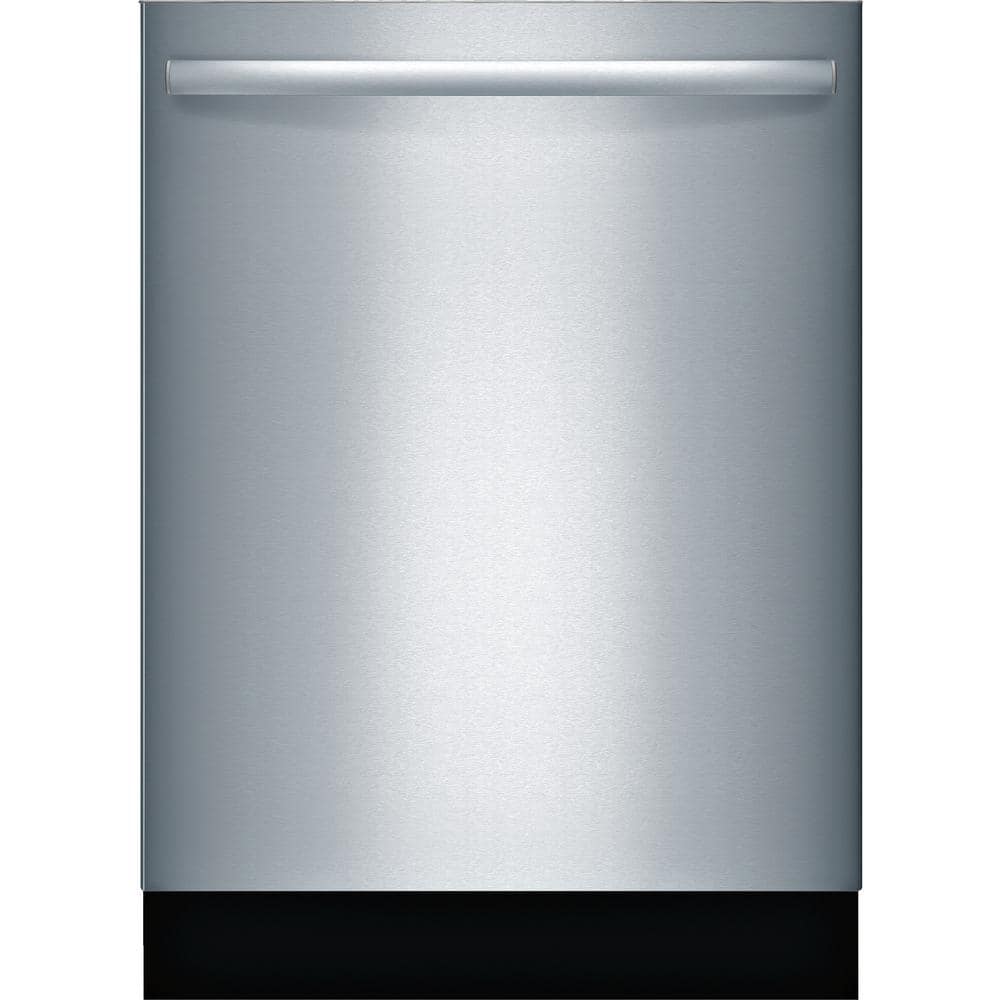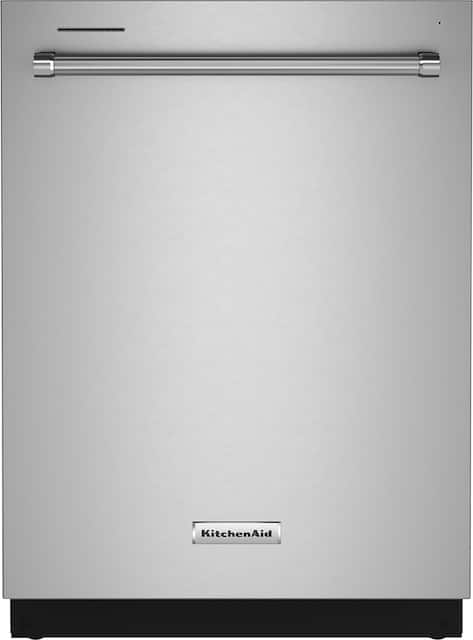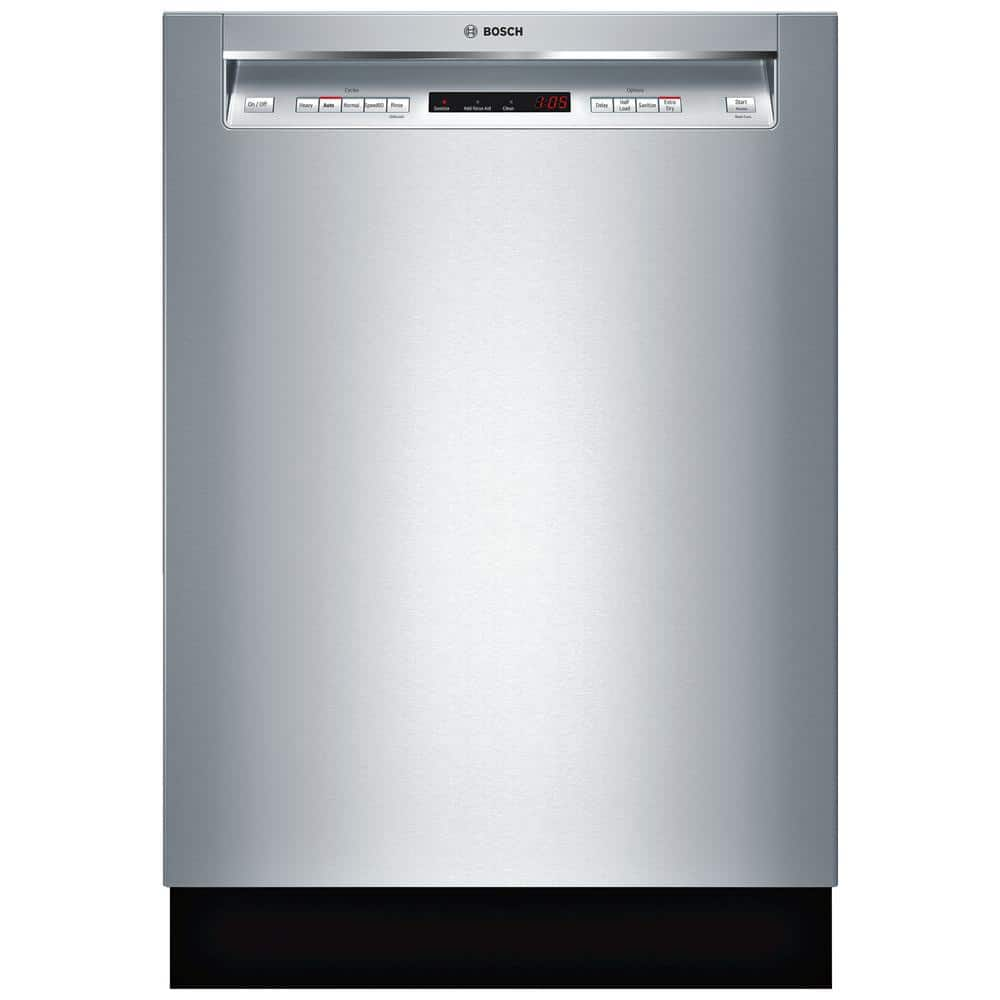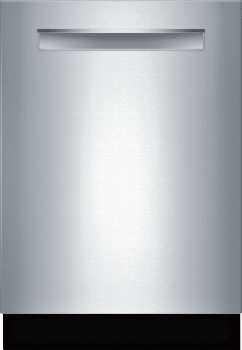Bosch 800 Series 24 in. ADA Top Control Dishwasher in Stainless Steel with Crystal Dry and 3rd Rack, 42dBA
ADA compliant model is shorter than standard dishwashers. Patented CrystalDry technology for the ultimate dry. 3rd rack adds versatility and more loading capacity.
This 24″ ADA-compliant dishwasher is uniquely designed for customers with special height requirements. It features sophisticated technologies for quiet operation, outstanding performance and remarkable flexibility. It also contains a built-in water softener to ensure optimally spot-free and shiny dishes.
- ADA compliant and compact size, designed for small spaces and customers with lower dishwasher height requirements
- Standard 3rd rack provides the perfect space for silverware and large utensils, while its V shape leaves room below both sides for taller items like stemware; also includes a lower rack silverware basket
- RackMatic adjustable middle rack easily adjusts to 9 different positions, to allow taller items like stemware to fit in the middle rack while leaving room for pots and pans below; the flip tines make loading wide bowls easy
- Hidden integrated electronic controls maintain a clean exterior and InfoLight shines a red beam on the floor to indicate when the dishwasher is running
- Extremely quiet operation (42 dBA) with InfoLight that shines a red beam on the floor to indicate when the dishwasher is running
- Large interior provides the space and loading flexibility to easily accommodate 15 place settings, and the 3rd rack provides additional space for silverware and utensils
- Offers 6 wash cycles, including the following Heavy, Auto, Normal, Express, Delicate, Favorite and 6 options, including Delay Start, Remote Start, Half Load, Sanitize, CrystalDry and Machine Care
- Every Bosch dishwasher is ENERGY STAR qualified and meets or exceeds federal guidelines, for year-round energy savings
- Full stainless steel tub is sleek, durable and long-lasting
- Precisely engineered detergent tray holds detergent tabs in place for a dedicated spray jet to directly dissolve them, preventing buildup for a deeper clean
- 24h delay start timer lets you run dishwasher at off-peak times
- Features 2 lower rack flip tines for improved storage capacity, with dedicated space for a tall vase or baby bottle
- 3rd rack provides the perfect space for silverware and large utensils while its V shape leaves room below both sides for taller items like stemware. Also includes a lower rack silverware basket
- Bosch’s advanced PrecisionWash system has intelligent sensors that continually scan and check the progress of dishes throughout the cycle, and powerful spray arms target every item of every load, for the ultimate clean
Additional information
| Cut-Out Depth x Height x Width (in.) | 24 x 32.13 x 24 |
|---|---|
| Depth - Door Shut (with Handle) (in.) | 24 |
| Depth - Door Shut (without Handle) (in.) | 24 |
| Depth With Door Open 90 Degrees (In) | 45.46 |
| Dishwasher Size (In) | 24 |
| Height - Maximum (in) | 34.44 |
| Height - Minimum (in) | 32.06 |
| Product Depth x Height x Width (in.) | 22.56 x 32.09 x 23.54 |
| Certifications and Listings | No Certifications or Listings |
| Manufacturer Warranty | One-Year Limited Warranty |






by Mike
This is definitely a very quiet washer. It seems to clean fairly well but the drying aspect seems to be hit and miss. I’ve read that as long as we wait long enough, it will dry. I understand this due to the type of heating this does, but it still seems to take a bit longer than expected. I was kind of excited for the Wifi aspect of this machine, but it is really not working out. I was able to get it connected, twice now, but it ultimately fails into a connect/disconnected state not long after. I’ve kind of given up on this part of it. I am positive it is not on my side of things as I have numerous wifi devices (many of which are strictly one band or another) and they all work fine. Another feature I thought we had for this device was a green LED showing on the floor when the cycle was done, but apparently not. Only the red one showing it is in use. Maybe I didn’t read the feature sheet properly or it was poorly worded. Ah well.
by Josh
So quiet and very powerful cleaning. Love the silverware drawer plus easy to install!
by None
Excellent appliance. Quiet and very attractive dishwasher.
by Greg
This dishwasher will do everything it says it will do, and then some, in fine fashion. The quality is second to none and will outlast almost every other machine. However, although I am a longtime fan of Bosch products, I am somewhat disappointed in the operation of this particular dishwasher because I like putting a cup of bleach in with every load of dishes that I wash to sanitize everything. Due to the nature of this machine and Bosch’s specifications, they strongly recommend against using bleach and their devices. I recommend checking the manufacturer’s specifications and operating instructions to ensure that the dishwasher you buy can handle bleach.
by Harvey
Quiet & efficient sums it up. I am thoroughly satisfied with my Bosch dishwasher! It cleans superbly & everything sparkles! I highly recommend!
by Stella
I have had several dishwashers over the last 50 years, and I would say this Bosch 800 Series is my absolute favorite. My kitchen layout required an ADA model, so I expected to have to settle for a smaller unit and less interior capacity, but the design is absolutely brilliant, it holds so much. The 3rd rack is wonderful! We are also saving water, I have been able to break myself of the “wash the dishes before you load” habit, and just lightly scrape them before putting in dishwasher. The dishes routinely come out absolutely clean, including pots and pans. The drying cycle is also very efficient, even for delicates placed on the bottom level, no concern over melted plastic containers. This dishwasher is also extremely quiet. Great dishwasher!
by Whit
Every dish, container, or piece of flatware I have put in this dishwasher has come out clean, including stuff my old dishwasher never would have removed. Last night, I loaded the dishes from a lasagna and everything was spotless on the basic normal cycle. I also love the absence of heating coils because I can put all my kids’ plastic lunch containers on the bottom rack. And it truly is whisper quiet, which is a big deal in our small house. I love it.